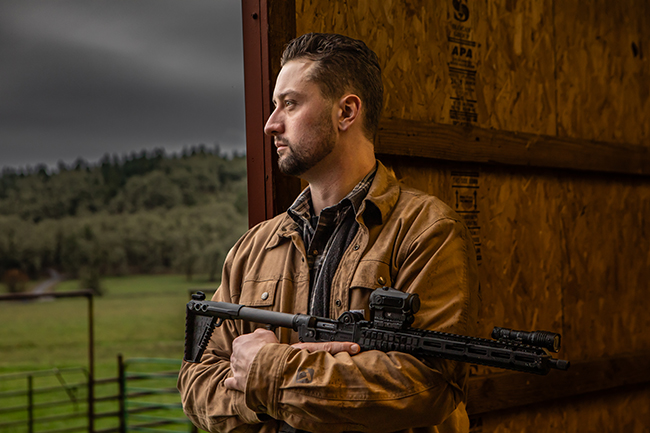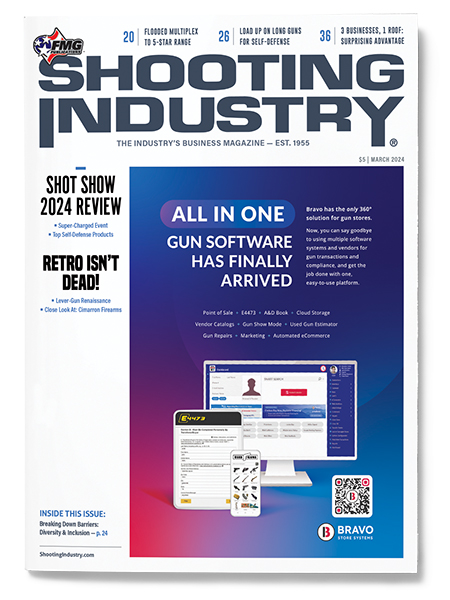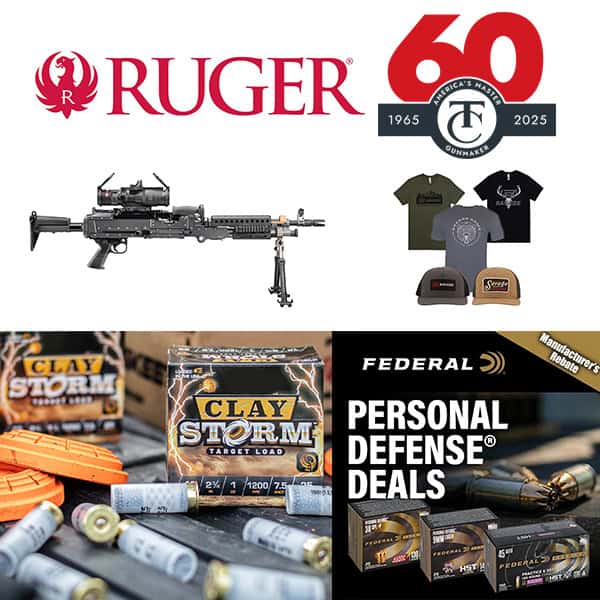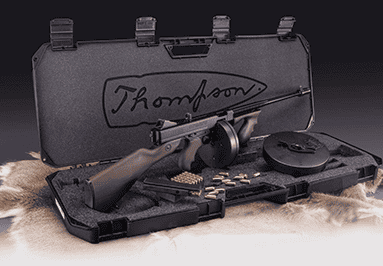Loading Up
Must-Have Self-Defense Long Guns & Accessories
When customers are considering self-defense options, they’ll most likely wind up with a handgun of some sort. But there are those who, for a variety of reasons, want something significantly larger.
Long guns may not be the biggest selling category, but they represent a solid opportunity to tap into a steady demand for self-defense firearms. We saw what happened during the pandemic and social unrest of 2020, when shotguns and other long guns disappeared from store shelves.
This is the second of a three-part series exploring self-defense sales. Last month, we looked at handguns and next month we’ll conclude with an exploration of non-lethal options. Here, we consider the role of shotguns and rifles in this critical self-defense sales category.
Clearly, there’s not as much variety compared with the handgun sector. For many people, the conversation about a self-defense long gun begins and ends with a 12-gauge pump shotgun. There’s a good reason for that, suggests John Harvey, owner of Oak Ridge Gun Range in Orlando, Fla.
“You don’t have to be a very good shot,” he said. “It’s something with a lot of power at close range. And you hit what you point it at.”
Still, in conversations with gun stores around the nation, we see the market does run a bit deeper.
What’s Selling?
The popularity of pump shotguns is driven by a range of factors. Some customers point to the ease of use. They are often seen as more reliable than semi-auto shotguns. Some sales are driven by tales of intruders being frightened off by the sound of a shotgun racking. Then there’s the price factor, says Scott Stirrat, owner of Idaho Guns & Outdoors in Boise, Idaho.
A customer can walk out the door with a dependable shotgun — they sell a lot of Mossberg Mavericks at around $250 — without having to stretch too far.
“That’s obviously a lot cheaper than most handguns,” Stirrat noted.
For those willing to spend a bit more, the Mossberg 500 and Remington 870 lines offer a lot of options for customers seeking a classic pump, noted Steve Pavolic, general manager of Target Shooting Solutions in Avondale, Pa.
“Those are the two most popular and I think we sell the most of those models to folks,” he confirmed. “Any of their variants in those families of shotguns.”
Yet, there are other options out there besides these traditional stalwarts.
In Orlando, Harvey still sees brisk business with Mossberg’s 590 Shockwave, with its pistol grip and barrel at just over 14″.
“Shotguns are selling like hotcakes since they made it legal to have a really short barrel,” he shared.
There are the semi-automatic shotguns, too. They may not be right for novices, but they can appeal to more advanced shooters, according to Stirrat, whose shop sells semi-autos from Mossberg and Beretta.
“Those are people who are going to spend $1,000 or more,” he said.
For customers who want something a little more exotic, there are the double-barrel pumps like the KelTec KSG, which holds as many as 14 shells in its dual tubes. Topping the $800 price point they aren’t a top seller, but they do grab some attention.
“They’re pretty popular,” said Stirrat, in Idaho. “They’ve been out for a while now, so people are probably not as excited as they were five years ago. But they are still something we keep in the store.”
ARs & “The Brace Factor”
Bringing AR rifles into the self-defense conversation is sure to spark a robust debate, particularly when we’re talking about neighborhoods with little space between houses.
“I usually try and steer people away from them for self-defense,” Stirrat affirmed. “You don’t want to be shooting rifles in the house if you can help it because it can go a long way and over-penetrate.”
At Target Shooting Solutions, most of the inquiries about ARs for self-defense come from novice shooters.
“They come in after hearing an AR is a good home-defense weapon,” Pavolic relayed, “but they don’t know much about anything else.”
When someone does opt for the platform, it’s common to start with an entry-level rifle like those offered by Diamondback. If they’re willing to spend more, they’ll look at Smith & Wesson and Ruger. And when it’s for home defense, rifles with shorter barrels tend to be more popular — bringing us to “the brace factor.”
The legal status of these devices — which effectively allow anyone to create a short-barreled rifle without applying for a tax stamp — has been a source of chaos for gun stores and gun owners in recent years. The latest ruling, by the Fifth Circuit Court of Appeals, has once again made them legal. However, the issue is unlikely to be truly settled until the U.S. Supreme Court weighs in.
This leaves stores and their customers in a sort of limbo. Do you load up on guns with braces? And are your customers willing to buy them?
Seeking clarification, Orlando’s Harvey contacted his ATF representative after the latest ruling.
“She contacted her superior for guidance and her superior sent a letter,” Harvey recalled. “The letter said: ‘Contact your lawyer.’”
After the recent court ruling, customers at Target Shooting Solutions started buying some of the braces that were already in stock before the previous legal setback. The store, however, is hesitant to jump fully back into this particular market.
“We haven’t gotten many of the factory-braced pistols in,” Pavolic said. “We’re not really sure where the market is with these and we don’t want to buy a bunch of stuff that’s just going to sit around.”
Accessories
Similar to handguns, long guns can generate a healthy amount of add-on sales, particularly with the infinitely customizable AR rifles.
Target Shooting carries a wide range of optics, scopes, magazines, stocks and forends.
“Maybe the gun comes with just a standard one and they want to upgrade to an M-LOK to have better attachments for grips, flashlights, lasers and whatever they want to customize it with,” Pavolic explained.
Some of the more popular shotguns (like the Mossberg 500/590 and Remington 870) also have a range of available accessories, including slings, M-LOK adaptors, side saddle shell holders, magazine tube extensions and replacement stocks.
“People are quick to put flashlights on them,” said Harvey, in Orlando. “Sometimes they’ll go with a laser, although it’s just really not necessary on a shotgun. But they saw something in a movie.”
Regardless of whether it’s a shotgun or rifle, there’s a good chance the customer will consider adding ammo, a carrying case and cleaning kit.
“They also buy relatively expensive eye/ear protection,” Harvey added. “The electronic muffs are very handy and the prices of those have come down. They’re not nearly as expensive as they used to be.”
Training
For shops with a range, training classes can be a great way to generate additional revenue — both from class fees and from extra sales generated by the classes that expose attendees to different guns and accessories.
Target Shooting Solutions offers AR classes (the demand hasn’t been there for shotgun courses) ranging from intro to more advanced courses. At the upper end, the courses emphasize upper-level techniques, including shooting on the move and shooting under stress. The classes are generally offered once a month, depending on the demand. Those advanced courses don’t tend to generate a lot of extra sales, since those customers already have most of the gear they need. But it’s a different story with the introductory courses.
“They may rent a gun to use for the class and then decide to buy it,” Pavolic said. “Or they may buy a rifle with the intention of taking the classes.”
As with handguns, long guns represent a strong market for self-defense sales when the right combination of product offerings and price point is met.
Next month, we’ll look at non-lethal options, with insights from dealers about this personal- and home-defense alternative.






